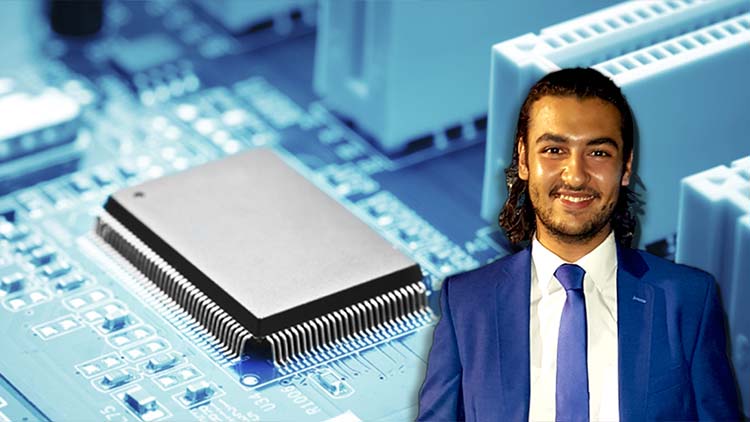Complete Power Electronics for Electrical Engineering - Level 3
Overview
Understand power electronics and its application with the Complete Power Electronics for Electrical Engineering – Level 3 course. The course will focus on the different types of switches, power electronic circuit, applications for different switching devices, fully-controlled and semi-controlled switches and single-phase rectifier circuits.
The Complete Power Electronics for Electrical Engineering – Level 3 will demonstrate a thorough understanding on AC chopper circuits with R load, capacitive load and L load, generation of the duty cycle, definition of the inverter, importance of inverters and applications of inverters. Key modules will be fully explored to ensure the learner gains a complete understanding of the subject.
Complete Power Electronics for Electrical Engineering – Level 3 will begin at the fundamentals and teach you about AC and DC choppers. It is a comprehensive training on how different rectifiers and conveters work. There is an ever-increasing need for qualified individuals who wish to further their career in electrical and power engineering! This is a IAP certified course that will demonstrate to leading employers you are continually developing yourself, and will make you a desirable candidate across leading industries.
Why You Should Consider Taking this Course at Study365?
Study365 is a leading online provider for several accrediting bodies, and provides learners the opportunity to take this exclusive IAP course. At Study365, we give our fullest attention to our learners’ needs and ensure they have the necessary information required to proceed with the training.
Learners who register will be given excellent learning support, discounts for future purchases and be eligible for a TOTUM Discount card and Student ID card with amazing offers and access to retail stores, the library, cinemas, gym memberships and their favourite restaurants.
- About the Tutor
- Learning Outcomes
- Who is this Course for?
- Entry Requirements
- Method of Assessment
- Certification
- Awarding Body
- Career Path & Progression

Ahmed Mahdy is an Electrical Power Engineer and the founder of Khadija Academy in 2019. He’s from Cairo, Egypt and is an online instructor for 9 years. He offers electrical engineering courses and regularly posts YouTube videos on electrical engineering. Ahmed has authored 6 books on electrical engineering and has taught close to 40,000 students living in 170 countries. The purpose of his Academy is to teach the fundamentals of electrical engineering from fundamentals to advance levels. He is a highly recognised and successful instructor and often receives 5-star reviews from his students. He has an engaging teaching style and will walk students step by step through complex information.
- Learn the definition of power electronics
- Learn about different types of converters
- Understand how to select a power electronic device
- Learn how rectifiers work
- Identify different applications of power electronics
This course is recommended for,
- Electrical engineering and power engineering students
- Electrical engineers or power engineers
- Anyone who wants to learn about power electronics
- Learners should be over the age of 16, and have a basic understanding of English, ICT and numeracy.
- A sound educational background is recommended
This is a knowledge-based course, and thus, will contain no method of assessment.
Upon the successful completion of the course, learners will be awarded an accredited ‘Certificate of Completion’ for ‘Certificate in Power Electronics for Electrical Engineering – Level 3' by IAP.
The International Awards for Professionals iAP is an awarding body established in 1999 that aims to promote a high educational standard. They hope to create online education that is trustworthy and credible. They are focused on raising the standards of online education, and ensuring it is accessible to all. The iAP provides accreditation for a range of educational establishments, and monitors and continually develops the educational standards of such institutions. Their globally recognised certifications give learners the opportunity to acquire the skills and knowledge needed to gain employment in the chosen fields.
The Certificate in Complete Power Electronics for Electrical Engineering - Level 3 will improve your candidature for a number of jobs in the electrical and engineering sectors. You can study further related courses that will open the door to new and exciting opportunities and enhance your expertise in this subject, and add this as a skillset on your resume. Your skills will be recognised by leading employers and top organisations, and for electrical engineering and power engineering students who wish to pursue this field, this certificate will prove to be highly effective.
Course Curriculum
| 1. Introduction to Power Electronics Components | |||
| 1.1. Lesson 1: introduction to power electronics | FREE | 00:13:00 | |
| 1.2. Lesson 2: uncontrolled switches | FREE | 00:17:00 | |
| 1.3. Lesson 3: what is the benefit of diode | FREE | 00:06:00 | |
| 1.4. Lesson 4: semi-controlled switches part 1 | FREE | 00:09:00 | |
| 1.5. Lesson 5: semi-controlled switches part 2 | FREE | 00:14:00 | |
| 1.6. Lesson 6: semi-controlled switches part 3 | FREE | 00:05:00 | |
| 1.7. Lesson 7: what is the benefit of thyristor | 00:05:00 | ||
| 1.8. Lesson 8: fully controlled switches part 1 | 00:17:00 | ||
| 1.9. Lesson 9: fully controlled switches part 2 | 00:10:00 | ||
| 1.10. Lesson 10: fully controlled switches part 3 | 00:12:00 | ||
| 2. Fundamentals of Rectifier Circuits | |||
| 2.1. Lesson 1: overview on rectifiers | 00:02:00 | ||
| 2.2. Lesson 2: rectifier definition | 00:01:00 | ||
| 2.3. Lesson 3: half wave uncontrolled rectifier with r load | 00:21:00 | ||
| 2.4. Lesson 4: example on half wave uncontrolled rectifier with r load part 1 | 00:06:00 | ||
| 2.5. Lesson 5: example on half wave uncontrolled rectifier with r load part 2 | 00:07:00 | ||
| 2.6. Lesson 6: half wave uncontrolled rectifier with RL load | 00:10:00 | ||
| 2.7. Lesson 7: derivation of the discontinuous current in r-l load | 00:08:00 | ||
| 2.8. Lesson 8: freewheeling diode (commutation diode) | 00:03:00 | ||
| 2.9. Lesson 9: half wave r-l load with FWD | 00:09:00 | ||
| 2.10. Lesson 10: difference between continuous and discontinuous mode in RL load | 00:07:00 | ||
| 2.11. Lesson 11: half wave RL load with FWD continuous mode | 00:06:00 | ||
| 2.12. Lesson 12: example on half wave rectifier with FWD | 00:07:00 | ||
| 2.13. Lesson 13: bridge full wave uncontrolled rectifier part 1 | 00:07:00 | ||
| 2.14. Lesson 14: bridge full wave uncontrolled rectifier part 2 | 00:05:00 | ||
| 2.15. Lesson 15: quick revision on bridge full wave uncontrolled rectifier | 00:06:00 | ||
| 2.16. Lesson 16: firing angle | 00:02:00 | ||
| 2.17. Lesson 17: half wave controlled rectifier r load | 00:05:00 | ||
| 2.18. Lesson 18: half wave controlled rectifier r-l load | 00:04:00 | ||
| 2.19. Lesson 19: half controlled r-l load with FWD | 00:06:00 | ||
| 2.20. Lesson 20: example 1 | 00:07:00 | ||
| 2.21. Lesson 21: example 2 | 00:08:00 | ||
| 2.22. Lesson 22: example 3 | 00:13:00 | ||
| 2.23. Lesson 23: example 4 | 00:09:00 | ||
| 2.24. Lesson 24: example 5 | 00:05:00 | ||
| 2.25. Lesson 25: fully controlled bridge rectifier part 1 | 00:06:00 | ||
| 2.26. Lesson 26: fully controlled bridge rectifier part 2 | 00:06:00 | ||
| 2.27. Lesson 27: quick revision on bridge full wave controlled rectifier | 00:02:00 | ||
| 2.28. Lesson 28: example 6 | 00:08:00 | ||
| 2.29. Lesson 29: half controlled bridge rectifier | 00:08:00 | ||
| 2.30. Lesson 30: half controlled bridge rectifier with FWD | 00:05:00 | ||
| 2.31. Lesson 31: example 7 | 00:06:00 | ||
| 2.32. Lesson 32: example 8 | 00:07:00 | ||
| 2.33. Lesson 33: performance parameters | 00:04:00 | ||
| 2.34. Lesson 34: power factor | 00:04:00 | ||
| 3. Fundamentals of AC Choppers | |||
| 3.1. Lesson 1: introduction to ac choppers | 00:02:00 | ||
| 3.2. Lesson 2: definition of ac chopper | 00:05:00 | ||
| 3.3. Lesson 3: switching techniques in ac choppers | 00:06:00 | ||
| 3.4. Lesson 4: applications on ac choppers | 00:03:00 | ||
| 3.5. Lesson 5: types of ac choppers | 00:02:00 | ||
| 3.6. Lesson 6: ac chopper with r load | 00:14:00 | ||
| 3.7. Lesson 7: example 1 on ac chopper with R load | 00:06:00 | ||
| 3.8. Lesson 8: example 2 on ac chopper with R load | 00:04:00 | ||
| 3.9. Lesson 9: ac chopper with l load part 1 | 00:13:00 | ||
| 3.10. Lesson 10: ac chopper with l load part 2 | 00:06:00 | ||
| 3.11. Lesson 11: example on ac chopper with l load | 00:08:00 | ||
| 3.12. Lesson 12: ac chopper with RL series load | 00:20:00 | ||
| 3.13. Lesson 13: example on ac chopper with RL series load | 00:07:00 | ||
| 3.14. Lesson 14: ac chopper with RL parallel load | 00:25:00 | ||
| 3.15. Lesson 15: example on ac chopper with RL parallel load | 00:06:00 | ||
| 3.16. Lesson 16: ac chopper with pure capacitive load | 00:14:00 | ||
| 3.17. Lesson 17: example on ac chopper with pure capacitive load | 00:04:00 | ||
| 3.18. Lesson 18: ac chopper loaded by heavy rectifier | 00:06:00 | ||
| 3.19. Lesson 19: ac chopper loaded by an AC motor with sinusoidal back EMF | 00:12:00 | ||
| 3.20. Lesson 20: example on ac chopper loaded by an AC motor with sinusoidal back EMF | 00:08:00 | ||
| 3.21. Lesson 21: integral cycle control | 00:11:00 | ||
| 3.22. Lesson 22: example on integral cycle control | 00:04:00 | ||
| 4. Fundamentals of DC Choppers | |||
| 4.1. Lesson 1: introduction to dc choppers | 00:02:00 | ||
| 4.2. Lesson 2: definition and applications of dc choppers | 00:05:00 | ||
| 4.3. Lesson 3: step down dc chopper with r load | 00:12:00 | ||
| 4.4. Lesson 4: example on step down dc chopper with r load | 00:08:00 | ||
| 4.5. Lesson 5: generation of duty cycle | 00:09:00 | ||
| 4.6. Lesson 6: switching techniques | 00:03:00 | ||
| 4.7. Lesson 7: step down dc chopper with RLE load part 1 | 00:19:00 | ||
| 4.8. Lesson 8: step down dc chopper with RLE load part 2 | 00:15:00 | ||
| 4.9. Lesson 9: example 1 on step down dc chopper with RLE load | 00:13:00 | ||
| 4.10. Lesson 10: example 2 on step down dc chopper with RLE load | 00:02:00 | ||
| 4.11. Lesson 11: step up dc chopper with r or RL load | 00:09:00 | ||
| 4.12. Lesson 12: step up dc chopper with re load | 00:15:00 | ||
| 4.13. Lesson 13: example on step up dc chopper with re load | 00:20:00 | ||
| 4.14. Lesson 14: buck regulator part 1 | 00:16:00 | ||
| 4.15. Lesson 15: buck regulator part 2 | 00:17:00 | ||
| 4.16. Lesson 16: example on buck regulator | 00:03:00 | ||
| 4.17. Lesson 17: boost regulator | 00:23:00 | ||
| 4.18. Lesson 18: example on boost regulator | 00:06:00 | ||
| 4.19. Lesson 19: buck-boost converter | 00:17:00 | ||
| 4.20. Lesson 20: example on buck-boost converter | 00:05:00 | ||
| 5. Fundamentals of Inverters | |||
| 5.1. Lesson 1: introduction to inverters | 00:02:00 | ||
| 5.2. Lesson 2: definition of inverter | 00:04:00 | ||
| 5.3. Lesson 3: importance and applications of inverters | 00:08:00 | ||
| 5.4. Lesson 4: single phase half bridge r-load | 00:15:00 | ||
| 5.5. Lesson 5: single phase half bridge RL-load | 00:08:00 | ||
| 5.6. Lesson 6: performance parameters of an inverter | 00:05:00 | ||
| 5.7. Lesson 7: example on single phase half bridge | 00:10:00 | ||
| 5.8. Lesson 8: single phase bridge inverter R-load | 00:06:00 | ||
| 5.9. Lesson 9: single phase bridge inverter RL-load | 00:07:00 | ||
| 5.10. Lesson 10: example on single phase bridge inverter | 00:06:00 | ||
| 5.11. Lesson 11: three phase inverters and obtaining the line voltages | 00:15:00 | ||
| 5.12. Lesson 12: three phase inverters and obtaining the phase voltages | 00:17:00 | ||
| 5.14. Lesson 14: single pulse width modulation | 00:13:00 | ||
| 5.15. Lesson 15: multiple pulse width modulation | 00:13:00 | ||
| 5.16. Lesson 16: example on multiple pulse width modulation | 00:04:00 | ||
| 5.17. Lesson 17: sinusoidal pulse width modulation | 00:16:00 | ||
| 5.18. Lesson 18: industrial inverter | 00:03:00 | ||
| Completion Certificate Request | |||
| Completion Certificate Request | |||





Danny Dixon
This learning is good for forging ahead in engineering jobs. The Level 3 certification offers something unique in such an affordable price.
Logan Atkinson
While studying for my engineering degree I needed to refresh myself with the different types of power electronic devices. Well, this course came in handy because it discusses the three main types of power electronics devices in detail!
Cameron Barrett
I really recommend this easy-paced video training to anyone who wants to learn at their own pace and want to become a power engineer.
Drew Morgan
Chapters are organised vary comprehensively to take your learning step by step. Each video taught me something new; I gained much and paid just 19 pounds. Wow.